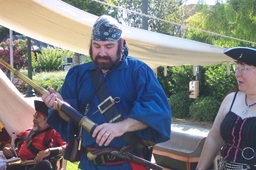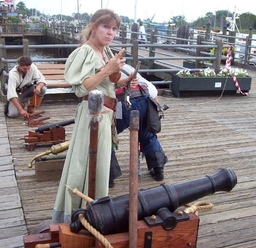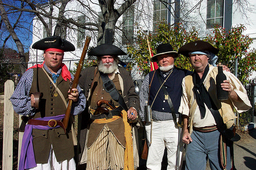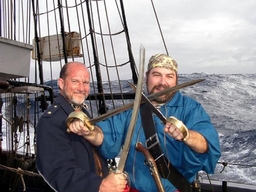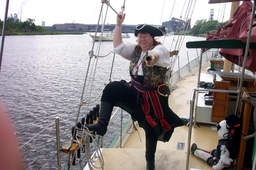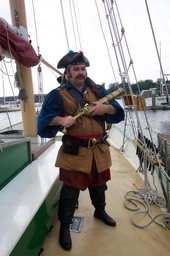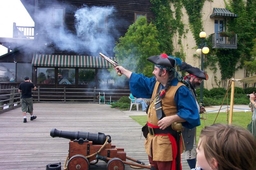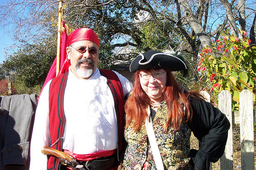-
Posts
383 -
Joined
-
Last visited
Content Type
Profiles
Forums
Events
Gallery
Everything posted by Bright
-
After removing the blood I Use Flitz Polish & Rain-X wax ;-}
-
Reclaiming the Blade (2008) NR Explore the history of the sword in this cutting-edge documentary, which traverses the globe to interview archaeologists, research scientists and martial arts experts from Europe, the United States and Asia. Special guests include Hollywood fight choreographer Bob Anderson, historical fencing expert John Clements, illustrator and conceptual designer John Howe and swashbuckling actor Viggo Mortensen. John Rhys-Davies narrates
-
See Reclaiming the Blade (2008) Explore the history of the sword in this cutting-edge documentary, which traverses the globe to interview archaeologists, research scientists and martial arts experts from Europe, the United States and Asia. Special guests include Hollywood fight choreographer Bob Anderson, historical fencing expert John Clements, illustrator and conceptual designer John Howe and swashbuckling actor Viggo Mortensen. John Rhys-Davies narrates
-
Great Journal makes me wish I made the drive with TJ, yea need to come to Charlston SC and do the tall ships mate ;-}
-
I belive it would be made of hemp.
-
A little different than we thought. About.com: http://www.drcigar.com/CigarsHistory.htm
-
We do not know when it was first grown, or smoked, but we can be pretty certain that the inhabitants of Europe were unaware of tobacco until after Columbus s epic voyage of 1492. Two of his sailors reported that the Cuban Indians smoked a primitive form of cigar, with twisted, dried tobacco leaves rolled in other leaves such as palm or plantain. In due course, Spanish and other European sailors caught the habit, as did the Conquistadors, and smoking spread to Spain and Portugal and eventually France, most probably through Jean Nicot, the French ambassador to Portugal, who gave his name to nicotine. Later, the habit spread to Italy and, after Sir Walter Raleigh's voyages to America, to Britain. Smoking was familiar throughout Europe - in pipes in Britain - by the mid-16th century and, half a century later, tobacco started to be grown commercially in America. Tobacco was originally thought to have medicinal qualities, but there were already some who considered it evil and it was denounced by Philip II of Spain, and James I of England. The word cigar originated from sikar, the Mayan-Indian word for smoking, which became cigarro in Spanish, although the word itself, and variations on it, did not come into general use until the mid-18th century. Cigars, more or less in the form that we know them today, were first made in Spain in the early 18th century, using Cuban tobacco. At that time, no cigars were exported from Cuba. By 1790, cigar manufacture had spread north of the Pyrenees, with small factories being set up in France and Germany. As a 1720's Pirate, would it not be possible to have taken a Spanish vessel with Cigars onboard carried by a wealthy Spaniard? The Dutch, too, started making cigars using tobacco from their Far Eastern colonies. But cigar smoking only became a widespread custom in France and Britain after the Peninsular War (1808-14), when returning British and French veterans made fashionable the habit they had learned while serving in Spain. Production of "segars" began in Britain in 1820, and in 1821 an Act of Parliament was needed to set out regulations governing their production. Because of an import tax, foreign cigars in Britain were already regarded as a luxury item. Soon there was a demand for higher quality cigars in Europe, and Spanish cigars were superseded by those made in Cuba, which was then a Spanish colony, where cigar production had started during the mid-18th century. Cigars, European smokers discovered, traveled better than tobacco. The cigar probably arrived in North America in 1762, when Israel Putnam, later an American general in the American War of Independence (1774-1778), returned from Cuba, where he had served in the British army. He came back to his home in Connecticut, where tobacco had been grown by settlers since the 17th century, with a selection of Havana cigars and large amounts of Cuban tobacco seed. Cigar factories were later set up in the Connecticut area, processing the tobacco grown from the Cuban seed. In the early 19th century American domestic production started to take off and Cuban cigars also began to be imported in significant numbers. But cigar smoking did not really boom in the United States until around the time of the Civil War in the 1860s, with individual brands emerging by the late 19th century. By then the cigar had become a status symbol in the United States. Would this not allow Civil War re-enactors to smoke cigars also? During the same period, cigar smoking had become so popular among gentlemen in Britain and France that European trains introduced smoking cars to accommodate them, and hotels and clubs boasted smoking rooms. The after-dinner cigar, accompanied by glasses of port or brandy, also became a tradition. This ritual was given an added boost by the fact that the Prince of Wales, the future Edward VII and a leader of fashion, was a devotee, much to the annoyance of his mother, Queen Victoria, who disliked smoking. Cigarettes, or paper cigars, first appeared on the scene in the early 19th century as a cheap alternative to cigars. The introduction of cigarette-making machines, in the 1880s, accelerated the growth in popularity of this form of smoking, which had become dominant by World War I. As a response, the production of machine-made cigars began in Cuba in the 1920s, after which both the manufacture and smoking of handmade cigars fell into a slow but steady decline.
-
May not be the best ,but I ENJOYED IT NONE THE LESS ;-} http://www.youtube.com/watch?v=DXOSi39QS58&feature=player_embedded
-
Pussers rum http://vids.myspace.com/index.cfm?fuseaction=vids.individual&videoid=26428744
-
Ayes asked about yea Ketland Trade Pistol that yea have pitchered under yea pistols. If yea had 8 then but where that leve me the customer if yea need 7 more to place an order. So you show what you cannot provid me even one of something as you have nothing in stock ? Left a bad tast in me mouth savvy.
-
"of course, that'd be better than 12 year old rum licked off a bare breast" Uhhhh, be that with or without ice.... But seriously, if there be MP3's, where be the postin? an Irish jib be alright, but how bout some good rum drinking songs, "yo ho" and all that. Be it light hearted or historical, I be ready to drink it in. Ayes don't think they can bees posted here in the pub but they are easy to put up at http://midsouthbuccaneers.ning.com/
-
Roger McGuinn is also the author of "The Cardiff Rose". A great pirate song. I contacted him once about getting permission to include it in our No Quarter Given Pirate Song Book, and he said he would have given us permission, except that EMI (or was it BMI) now owns the rights, and we'd have to deal with them. From what Roger told me, it sounds like they're much bigger pirates than we are at NQG, and it would take a pretty penny or two to liberate the rights to the song, so I didn't pursue it further. --Jamaica Rose http://www.youtube.com/watch?v=M4WlE7KYAOM&feature=player_embedded For them that not knows it yet ;-}
-
The Captain's Wife's Lament ;-}
-
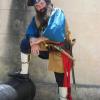
Somali pirates ruining the fun for play pirates?
Bright replied to LadyBarbossa's topic in Scuttlebutt
"Not all men seek rest and peace, some are born with the spirit of the storm in their blood, restless harbingers of violence and bloodshed, knowing no other path." -
Ayes favors Pusser's
-

Somali pirates ruining the fun for play pirates?
Bright replied to LadyBarbossa's topic in Scuttlebutt
http://www.afterdowningstreet.org/node/41661 -
Ayes finds this version of The Press Gang most haunting as it servers to explain why men turned pyracy when given the chance but alss aye have not been able to find this version or who does except on youtube. If anyone find an mp3 of this version or where it can be had ayes will much obliged.
-
From the album: Brethern Activity
-
From the album: Brethern Activity
-
From the album: Brethern Activity
-
From the album: Brethern Activity
-
From the album: Brethern Activity


